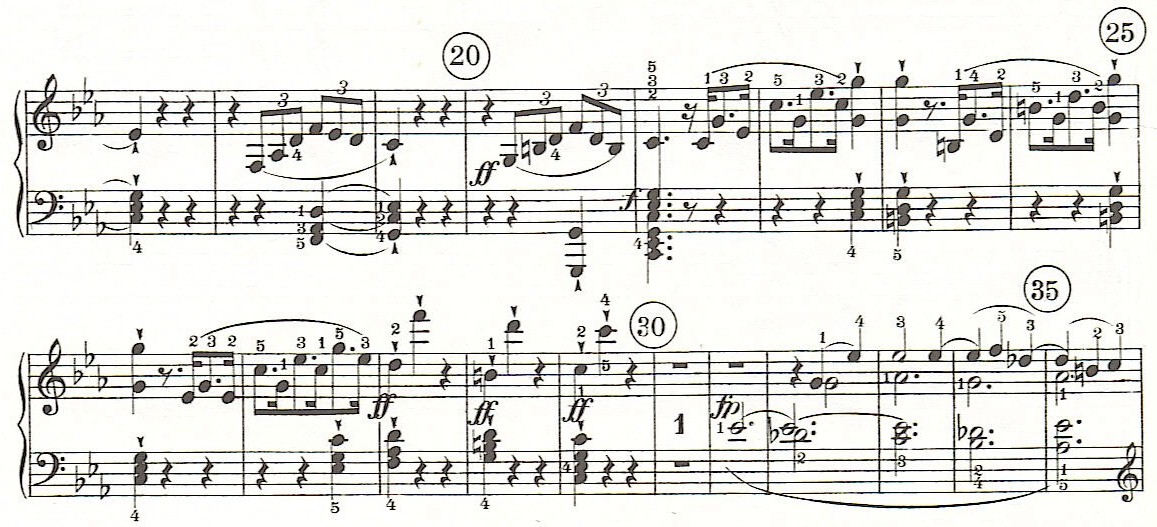 |
[I-IV-V-I] Prolongation of Function Elaboration of Motion In Symphonic: Back / Next |
| MODULES Cadential Structure In Symphonic Composition: Analysis of Beethoven's Op. 10 No. 1 (First Movement), continued Lester Allyson Knibbs, Ph.D. |
Cadential Structure in Beethoven's Op. 10 No. 1 (First Movement), continued |
 |
| Example 241b.5 |
| The immediate consequence of the measure 9-10 idea is the explosive rise from middle-c to the g-natural an octave and a fifth above in measures 22 through 24. (See example 241b.5) What follows is an explosive rise from the leading tone below middle-c to the same high g-natural. (Compare this to the first "rocket", from g-natural to the high e-flat, in measures one to three.) We are hammering at this g-natural, and in octaves. Something to remember, you think? Following this, we have a striking conclusion in which the familiar high f-natural (from measure 6-7) is emphasized, and the high d-natural. (Something else to remember.) This passage explodes in our face with the precision and symmetry of an eight-bar sentence, but it has ten measures. The logical consequence of an opening eight-bar phrase, which (as we saw) actually consists of two five measure statements (scrunched into nine measures, instead of ten). Dynamic assymmetrical symmetries. In motion. |
Introduction The Chaconne Cadential Structure --- Unitary & Binary Structures Linear & Periodic Structures Modules and Modalities Structural Counterpoint Modular Composition Appendices |
| Sonata Movements Op. 2 No. 1 (I) Op. 10 No. 1 (I) 1 2 3 4 |